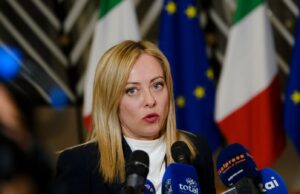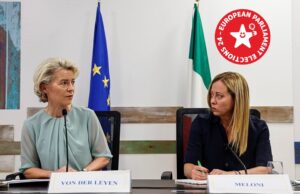Our member organisation transform! italia analyses the political landscape in Italy.
Italy will show up at the forthcoming European elections with the uneasy role of being the first among the EU founding countries with a populist government.
The populist forces that are currently leading the executive are Lega and the Five Stars Movement (Movimento 5 Stelle/ M5S), two parties very different from each other. The Lega is now one of the oldest parties present in the Italian parliament. By contrast, the M5S is a relatively recent movement. Their “core businesses” and their electorates are quite different too. The League was born as “Lega Nord” from the idea to divide Italy in favour of the wealthiest part, while the M5S first received more votes in the South. However, both of them grew could expand because of their critique of the elites and the establishment — which in the case of M5S focuses on the so-called caste.
The League, in fact, has been related with the Italian establishment many times since it was a coalition partner with the center-right in the government led by Berlusconi. Afterwards, the party made a transition in its “raison d’etre“ from Lega Nord to Lega by pointing as an enemy no longer at Rome, the Capital and symbol of the unity of the Nation, but at migrants.
Theoretically, both current allies should not be able to stick together but, in practice, they combine their demands in government and, above all, their electorates are gradually resembling each other. Lega has the lead with its attacks against migrants and with its neo-corporate policies, which fit perfectly in a framework shaped by a 20-year-old center-left and center-right neoliberalism.
The Lega is rising in the polls and also in local elections, for which the party runs together with the old Berlusconi alliance. The M5S, instead, is losing momentum both in polling surveys and on election days. This creates a tension between both governing parties, but for now they don’t seem to be eager to split since both need governmental stability. On the other hand, Berlusconi’s opposition is very weak, burdened by the popular discontent of the previous 20 years. His criticism focuses, which mainly on the incapacity of the populists to govern and on the risk of breaking away from Europe, does not appear effective.
Particularly, attention on the European issue is heightened because the relationship with the EU had been presented as one of the key points of the governmental action and its propaganda. The populist government has actually denounced any secession from the EU, and when negotiations with Brussels on the national budget occurred, the government basically surrendered to the EU’s will. However, the debate is still intense ahead of the European elections and the government claims it will “take over” Europe. Concretely, the Lega (which is member of the group of the Europe of Nations in the European Parliament) is moving with its eyes on Orban as a meeting point between the popular party and the populist right.
The M5S has been engaged in a confrontation with France and Macron, but even that leads to great difficulty in comparison with the League, since they have not yet identified their own European position.
The center left and the opposition of the old Berlusconi are weak and hold on to the past and the defense of the existing European Union.
The candidates of the PD (Democratic Party) secretariat have all signed a pro-European manifesto which confirms the old alliances between the socialists, the conservatives and the liberals in an anti-populist front.
The European question will be central but there is a risk of a clash between the mainstream political elites and the populists, with the latter being favoured initially but compromising with the EU in the end.
What goes against the trend are the social movements motivated in particular by anti-racism and by mobilisations against the most odious acts of the government. Recently, a major trade union demonstration gave, thankfully, the sign of an awakening.
On the radical left space, there is a part that is looking for a consensus among social groups disappointed by the M5S. In this way there is a possibility to create an electoral list that draws from the experience of the Party of the European Left and the GUE/NGL group in the European Parliament.*
* The article was written and published before the announcement of the left candidacy “La Sinistra-Europa” (check their website for more information: https://la-sinistra.it/).
Cover photo: Mural in Rome depicting Five Star Movement leader Luigi Di Maio kissing League leader Matteo Salvini.



